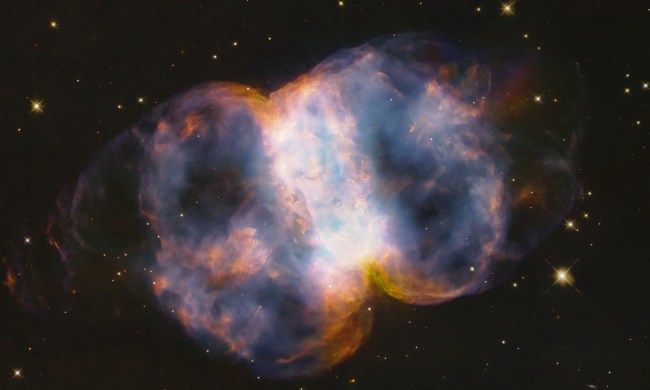With the early science results coming in from the James Webb Space Telescope we’re learning more than ever before about the early universe. But it’s not only Webb which is helping scientists to understand the universe when it was young — as a recent release from the Hubble Space Telescope demonstrates, we also have a lot to learn from other tools too.
Hubble researchers recently shared this image of a cluster of stars in the Small Magellanic Cloud, a dwarf satellite galaxy of our Milky Way. This small galaxy has a different chemical composition than our galaxy and is therefore more like the galaxies found in the early universe, so studying it can help us learn about how stars were born when the universe was still young.

The cluster of stars, called NGC 346, is small in size at just 150 light-years across but is a particularly busy stellar nursery. This region is full of young stars, and these stars seem to be forming in a flowing spiral structure of gas and stars which the researchers compare to a river. This could help explain why the rate of star formation here is so high.
“Stars are the machines that sculpt the universe. We would not have life without stars, and yet we don’t fully understand how they form,” explained study leader Elena Sabbi of the Space Telescope Science Institute in Baltimore in a statement. “We have several models that make predictions, and some of these predictions are contradictory. We want to determine what is regulating the process of star formation because these are the laws that we need to also understand what we see in the early universe.”
The findings are relevant to the early universe because, like early galaxies, there are relatively few heavy elements to be found in the Small Magellanic Cloud. This means that the stars here burn hot and bright and die off quicker than stars in our galaxy. Seeing how stars are born in this cluster, where the material is moving in a spiral formation, helps explain what might have happened in the period two to three billion years after the Big Bang.
“A spiral is really the good, natural way to feed star formation from the outside towards the center of the cluster,” explained another of the researchers, Peter Zeidler of AURA/STScI for the European Space Agency. “It’s the most efficient way that stars and gas fueling more star formation can move towards the center.”



